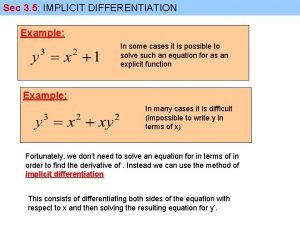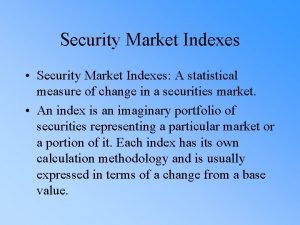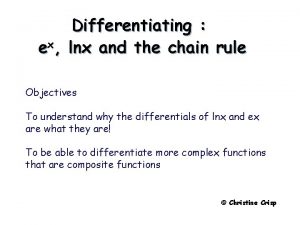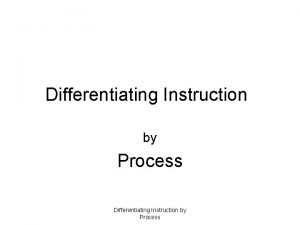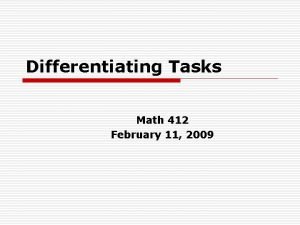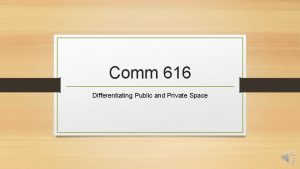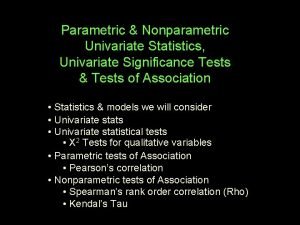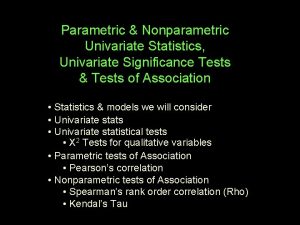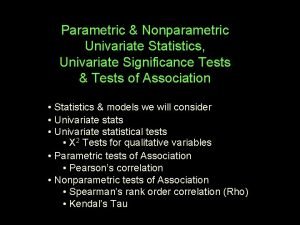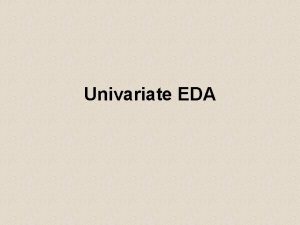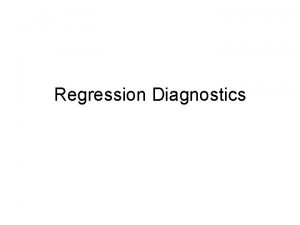Rules for Differentiating Univariate Functions Given a univariate










- Slides: 10

Rules for Differentiating Univariate Functions Given a univariate function that is both continuous and smooth throughout, it is possible to determine its derivative by applying one or more of the specific rules of differentiation outlined in the following.

Rules for Differentiating Univariate Functions n Constant Function Rule: The derivative of a constant function is zero. y = f(x) = c where c is a constant.

Rules for Differentiating Univariate Functions n Constant Multiplied by a Function Rule: Let y be equal to the product of a constant c and some function f(x), such that y = cf(x) then

Rules for Differentiating Univariate Functions n Power Rule: Let y = f(x) = xn, where the dependant variable x is raised to a constant value, the power n, then

Rules for Differentiating Univariate Functions n Sum (Difference) Rule: Let y be the sum (difference) of two functions f(x) and g(x). y = f(x) + g(x) then

Rules for Differentiating Univariate Functions n Product Rule: Let y = f(x). g(x), where f(x) and g(x) are two functions of the variable x. Then

Rules for Differentiating Univariate Functions n Quotient Rule: Let y = f(x)/g(x), where f(x) and g(x) are two functions of the variable x and g(x) ≠ 0. Then

Rules for Differentiating Univariate Functions n Chain Rule: Let y = f(z), which is a function of another function, z = g(x). Then

Rules for Differentiating Univariate Functions n Natural Logarithmic Rule: Let y = lnf(x), where y is a natural logarithmic function of x. Then

Rules for Differentiating Univariate Functions n Natural Exponential Function Rule: The natural exponential function rule is used when the natural base, e, is raised to a power that is some function of the independent variable x, such as y = ef(x). Then
 Derivatives of inverse trigs
Derivatives of inverse trigs The first stage of the coming together process.
The first stage of the coming together process. Differentiating process examples
Differentiating process examples School environment examples
School environment examples Scaffolding vs differentiation
Scaffolding vs differentiation Differentiating acceleration
Differentiating acceleration Trigonometric identities derivatives
Trigonometric identities derivatives Contoh differentiating competencies
Contoh differentiating competencies Contoh threshold competencies
Contoh threshold competencies Security market indexes
Security market indexes Differentiating ex
Differentiating ex






